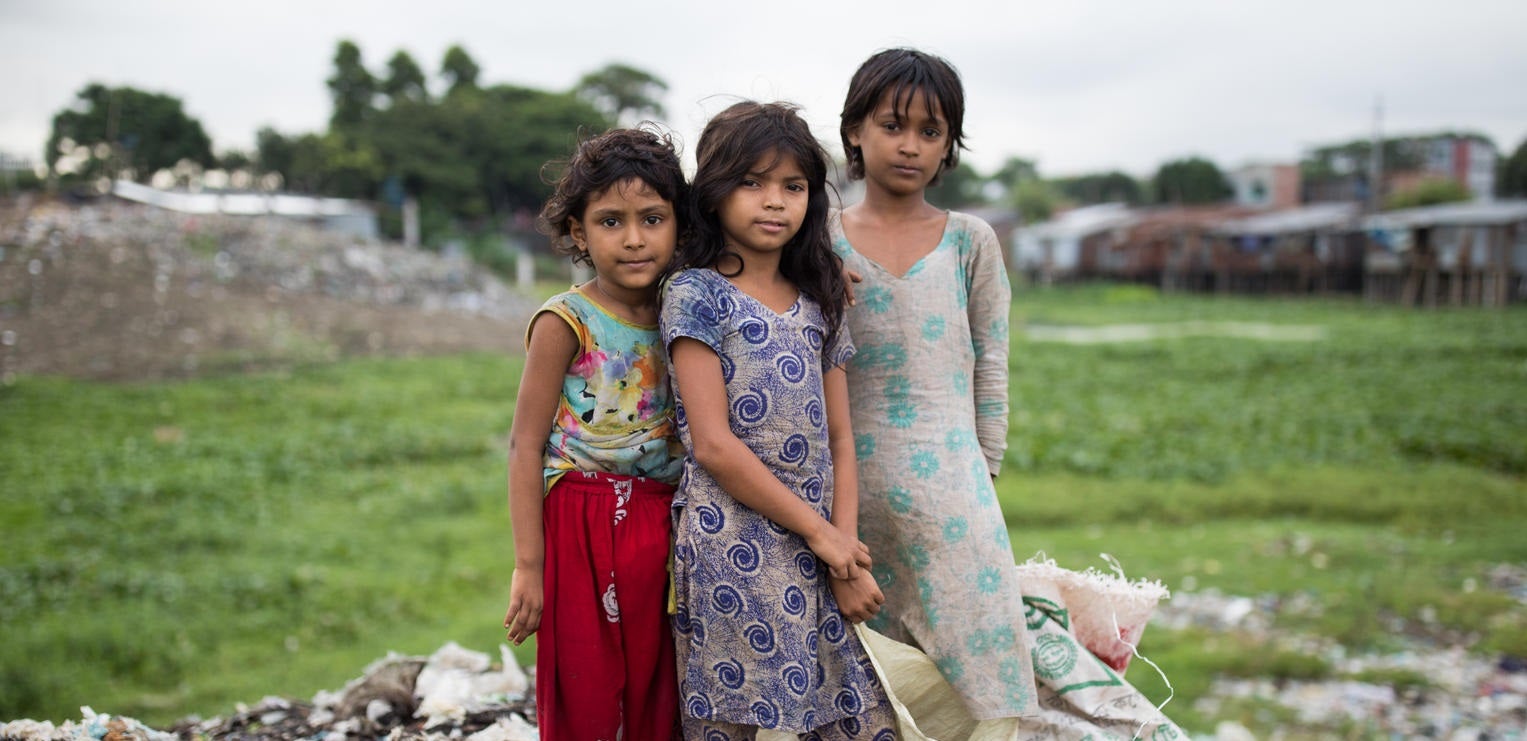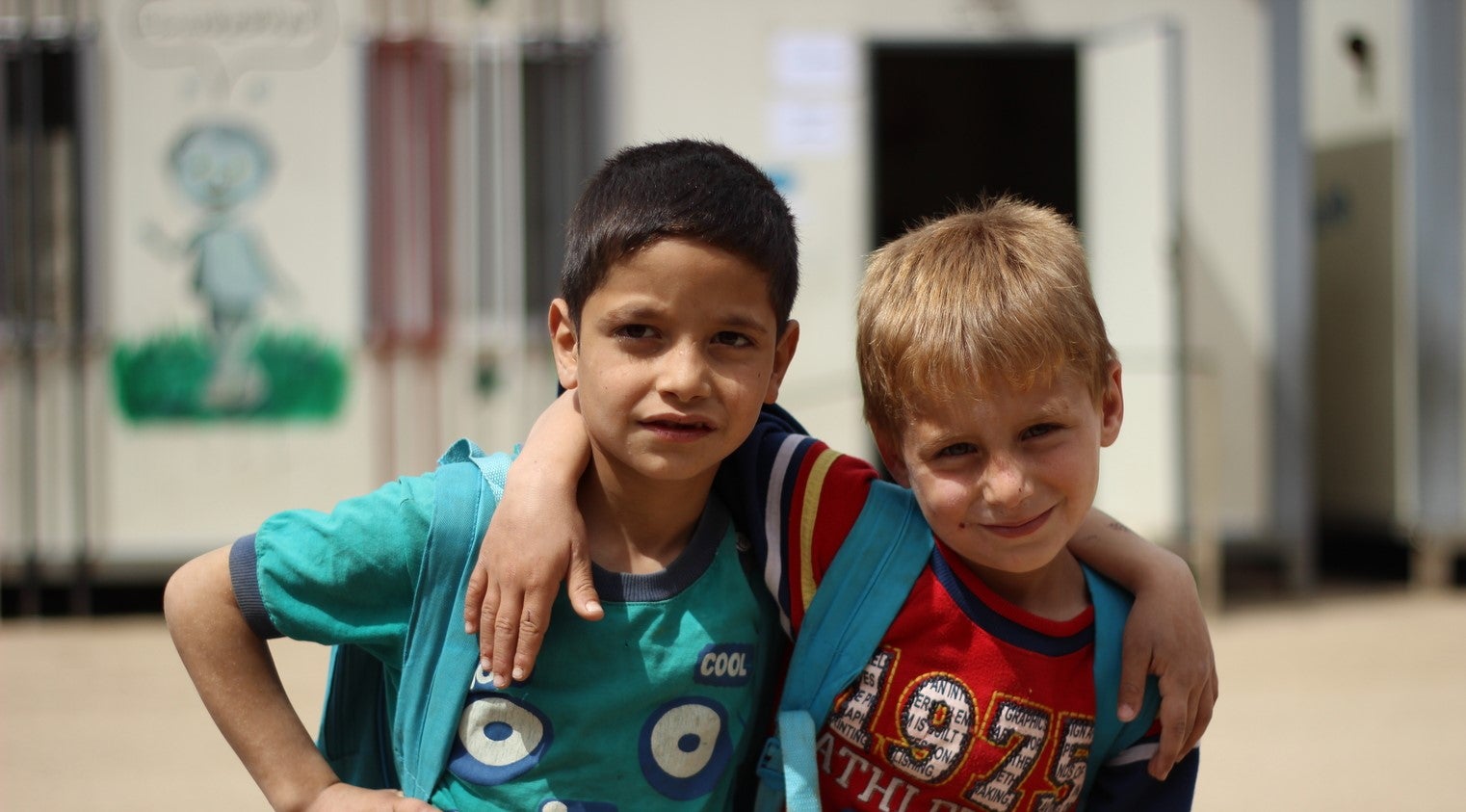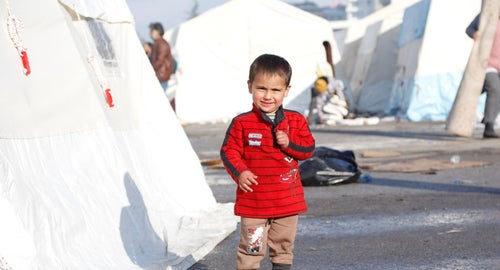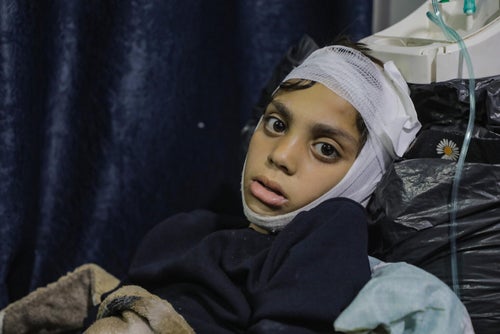Today there are more children in need of humanitarian assistance than at any other time since the Second World War, with as many as one in six children in the world affected by war or conflict.
For 12 long years, war has been raging in Syria. The conflict, which first broke out on 15 March 2011, has caused one of the most complex humanitarian situations in the world and has left children under 12 years old in Syria knowing nothing but war and conflict.
Children are facing a worsening economic crisis, continued localised hostilities, mass displacement, and devastated public infrastructure. Food insecurity, reliance on unreliable and alternative water sources, protection concerns, and high school dropouts are acute. On top of this, a cholera outbreak was declared on 10 September 2022, quickly spreading across the country, with children especially vulnerable.
If this wasn’t enough, children in Syria have now had to endure three earthquakes; the first was a 7.7 magnitude, followed by 7.6 and 6.4 magnitude, killing tens of thousands and affecting 3.7 million children, who are now in urgent need of water, shelter, food, and emergency medical and psychosocial assistance.
Our teams have been on the ground in Syria and across the region since the beginning of the war, working day and night to protect children and deliver life-saving supplies.
Through it all, UNICEF has kept children safe, healthy and learning. Here are the faces of 12 children who have been enduring war their whole lives.
Musa, six
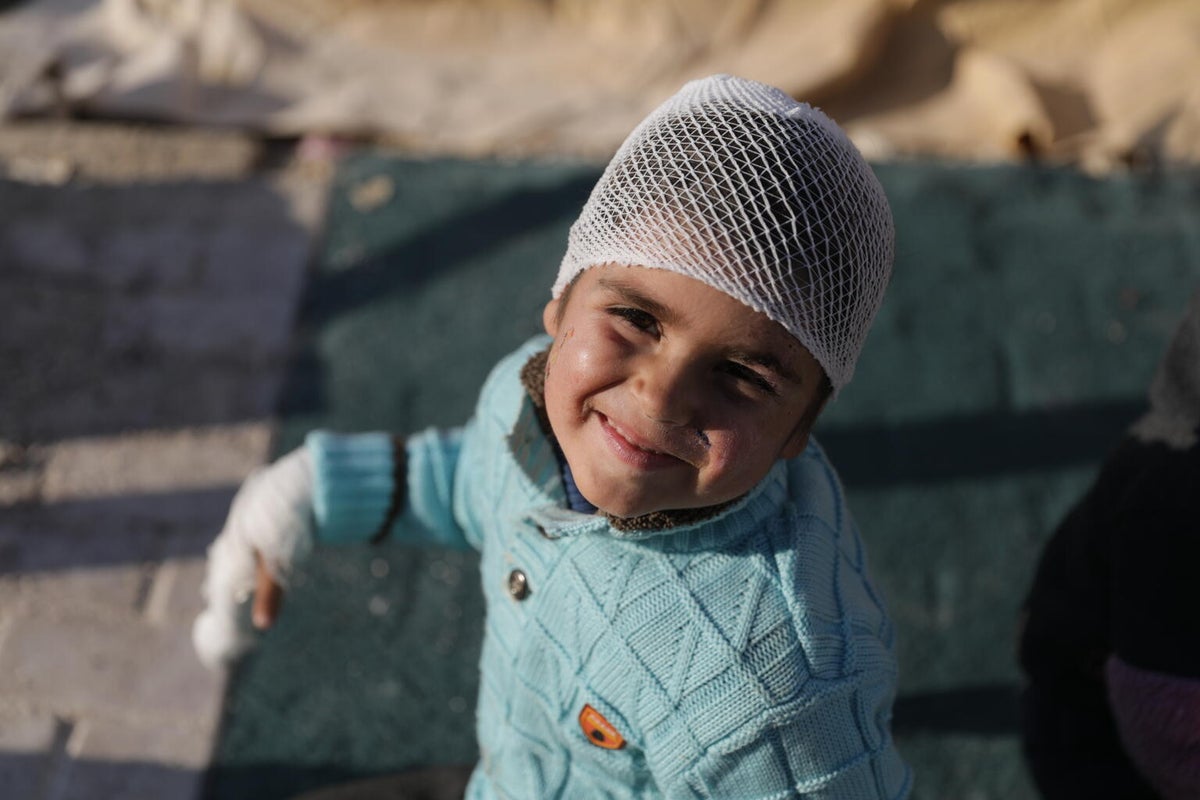
In the aftermath of the devastating earthquakes, six-year-old Musa stands inside the damaged living room of his family's home in Syria. A wall collapsed on him during the earthquake, leaving him injured and forcing his family to flee and seek refuge in a nearby makeshift tent.
Musa recalls the moment of impact, saying, “My mother came and told me, ‘Wake up! There's an earthquake!’ I went outside, and something fell on me.”
Despite the destruction around him, Musa smiles with the hope of a better future.
Even before the earthquakes, Syria had the largest number of internally displaced people in the world, with 6.8 million people displaced – including nearly 3 million children.
Reem, eleven
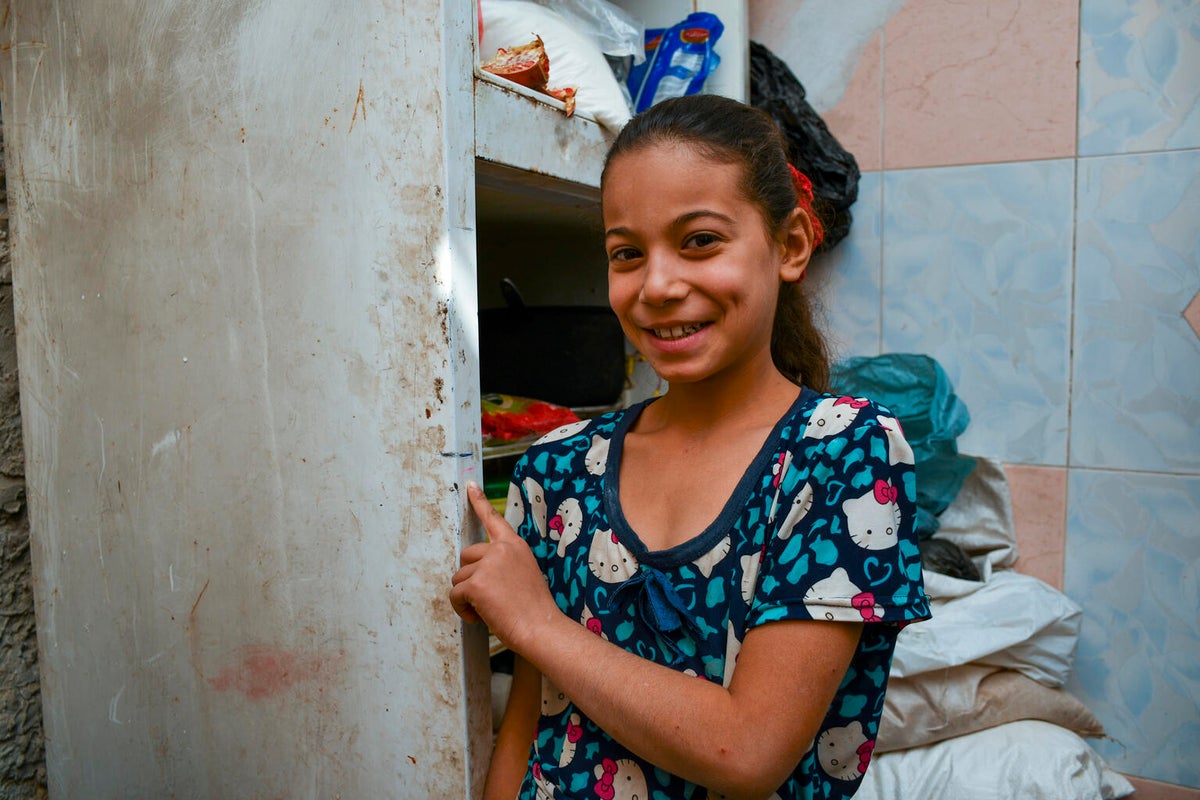
At her home in rural Damascus, 11-year-old Reem points at a mark on the kitchen where her mother, Zahira, drew the marks to measure her height and growth.
“Living amid rubble is tough, but it’s worse during the winter,” Zahira said. “My husband and I spent most of our time trying to stop rainwater from leaking in,” she added.
Reem and her family were forced to flee their home in 2011 when the conflict escalated. In 2018, they were able to return home.
"I cried my heart out when I saw the house. In the past, every one of us had a room. We lived happily together until we had to escape for safety."
During the years of displacement, Zahira and her husband, Ismail, struggled to make ends meet. After moving back home, Reem and her three sisters were diagnosed with malabsorption, a difficulty in the digestion or absorption of nutrients from food. UNICEF launched a Cash for Winter program, which Reem’s family used to buy food so that they could maintain a healthy diet.
Diaa, ten
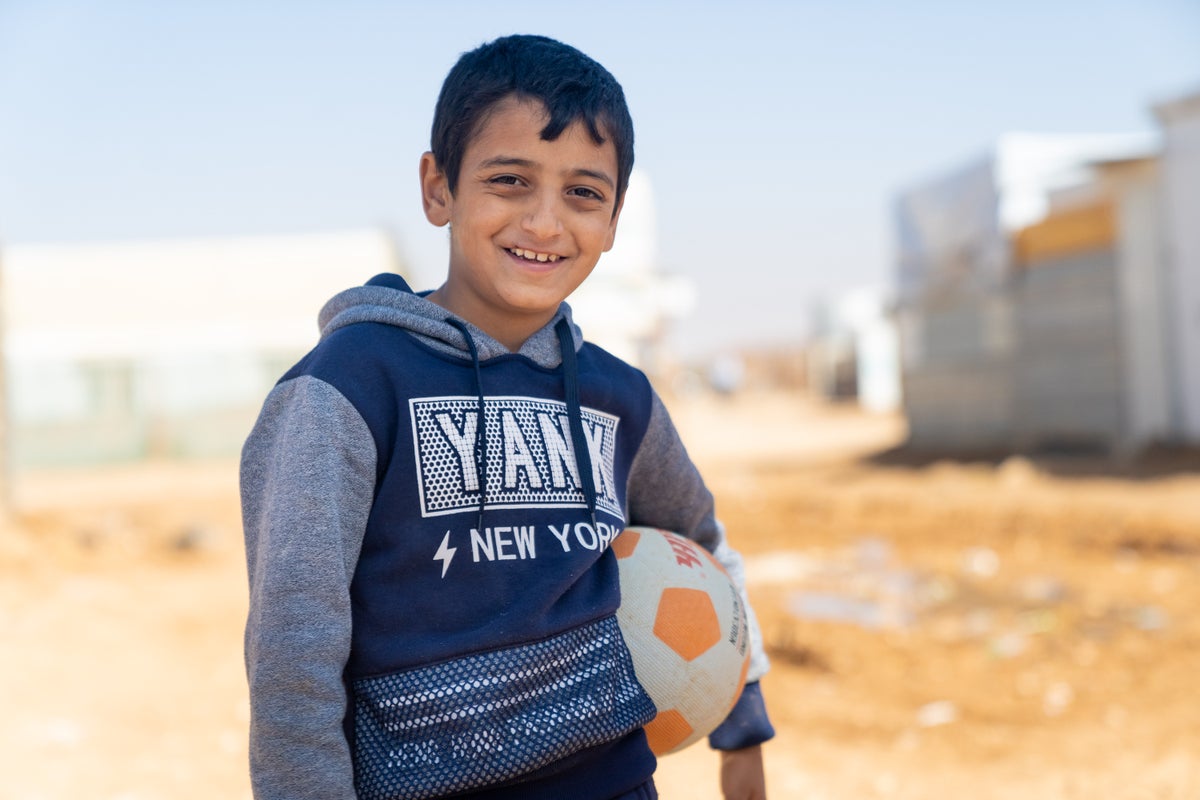
“Now I go and play football, which is much better than collecting water," says Diaa.
Diaa has lived in Za’atari refugee camp – the largest Syrian refugee camp in the world – with his grandmother since he was four years old. Since the family arrived in 2012, there have been dramatic improvements to the water and sanitation situation.
Before the new water network, Diaa was responsible for collecting water from the communal tap stands. “We had jerrycans and buckets and would go fill them up. It would take us an hour to bring the water all the way home,” says Diaa.
Now mothers can open a tap to fill a kettle, and children are playing football in safe streets instead of waiting for water. “But now we have no worries. We sit, and the water comes to us on its own!” says Diaa.
Tala, four
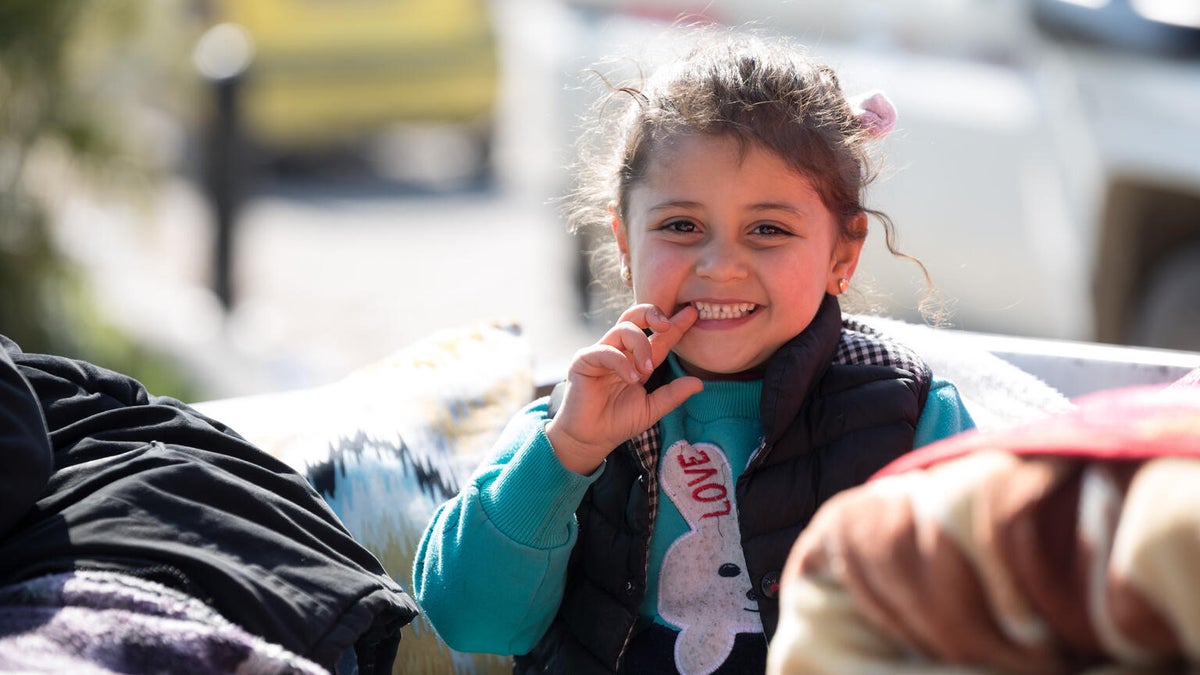
As a result of the devastating earthquakes that hit Syria and Turkiye on 6 February 2023, children like four-year-old Tala and their families have been living in extremely difficult conditions.
"I slept in the car! I was scared because the building might fall. I want to travel to a country where there are no earthquakes. Or maybe live in a better building. A building that does not fall"
The second earthquake that hit Syria on 20 February 2023 left affected children and families in fear. Families like Tala’s spent the night sleeping outside as they were afraid that a new earthquake might happen.
In 2023, 15.3 million people, including nearly 7 million children, will require humanitarian assistance in Syria.
Somar, eight
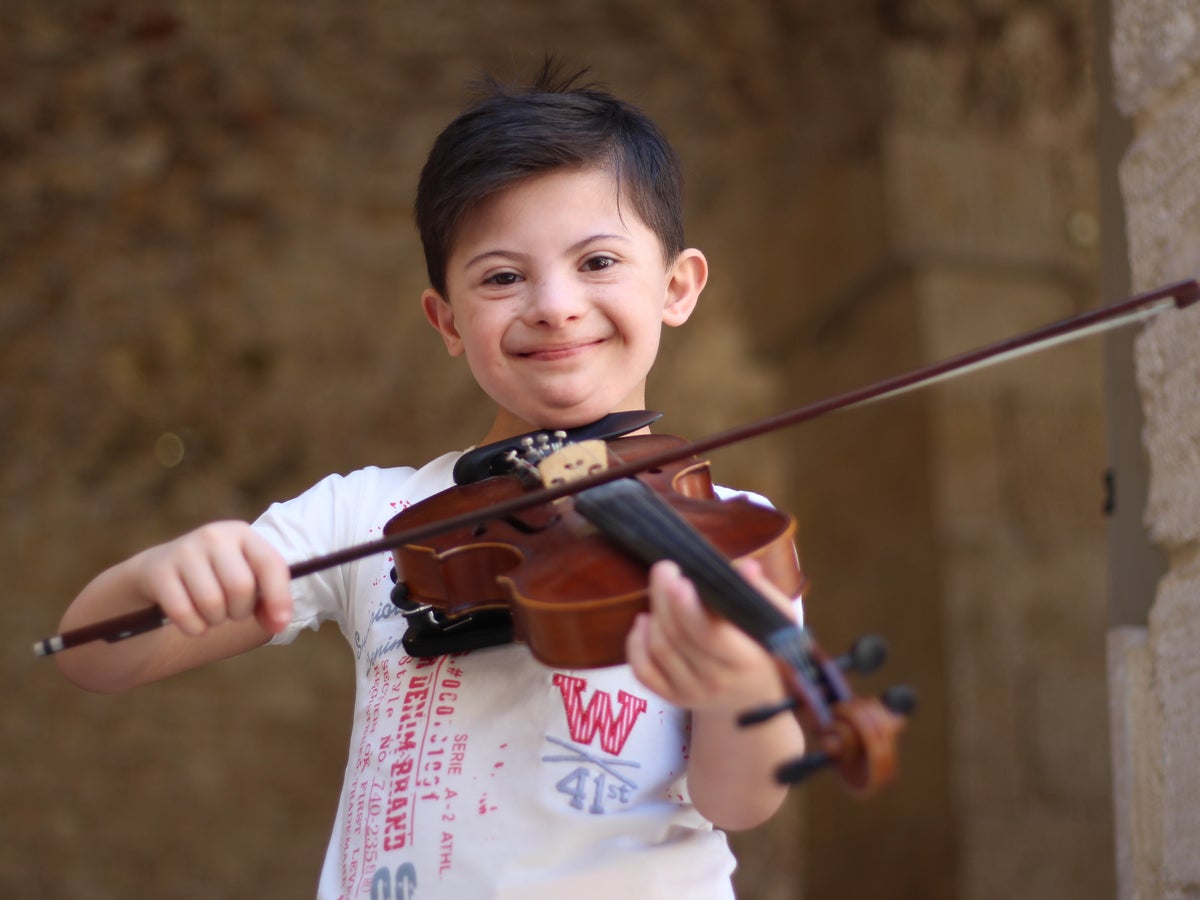
Born just before the Syrian war, life has been difficult for Somar, who also has Down’s syndrome.
“I lost my husband in the fighting,” says his mother, Hind. “We were then forced to flee our home, and the financial burdens kept growing, but I kept trying to fill the gap that their father’s death had created and give Somar and his sister, Rawad, a normal life.”
Despite the hardships, Somar dreams of being a violinist. Hind uses the monthly cash assistance she receives from UNICEF to sign him up for swimming and violin lessons, to help him express himself and develop his talents.
“He’s a happy child now, despite everything he’s been through,” says Hind.
Ni’mat, nine
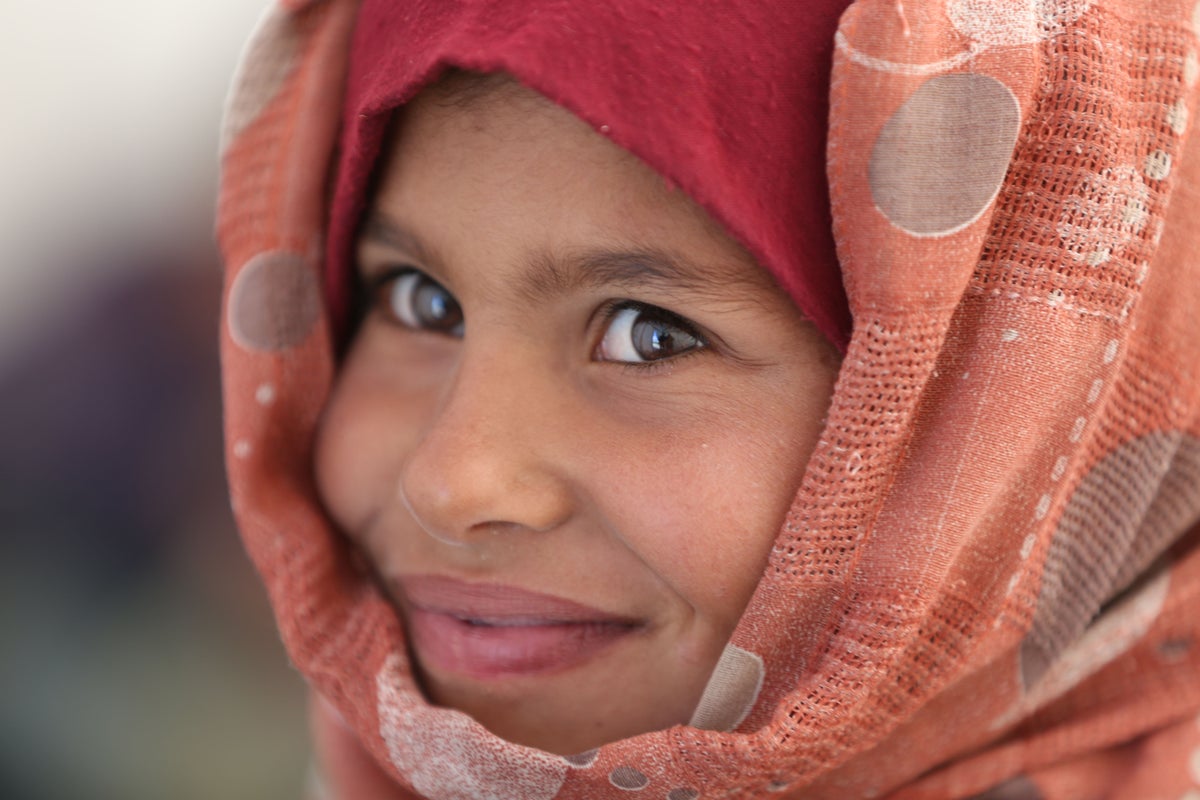
“This is the first time for me in a school,” says Ni’mat, living in a makeshift camp in rural Damascus after being displaced three times with her family.
“Before coming here, we used to spend all our time at home helping my mother and filling water from the well. We also used to make bread and help my mum cook on wood inside the tent.”
For children living through the conflict, being in school, studying or playing is a privilege many cannot afford.
Until early 2017, Ni’mat and around 100 other children at the camp were some of these children. In response, a group of local volunteers set up a tent for around 30 children of different age groups to receive basic education.
In 2022, UNICEF supported 1.6 million children with learning opportunities in formal and non-formal settings. The chance to learn provides a ray of hope amidst displacement and insecurity.
Karam & Mohamed, seven
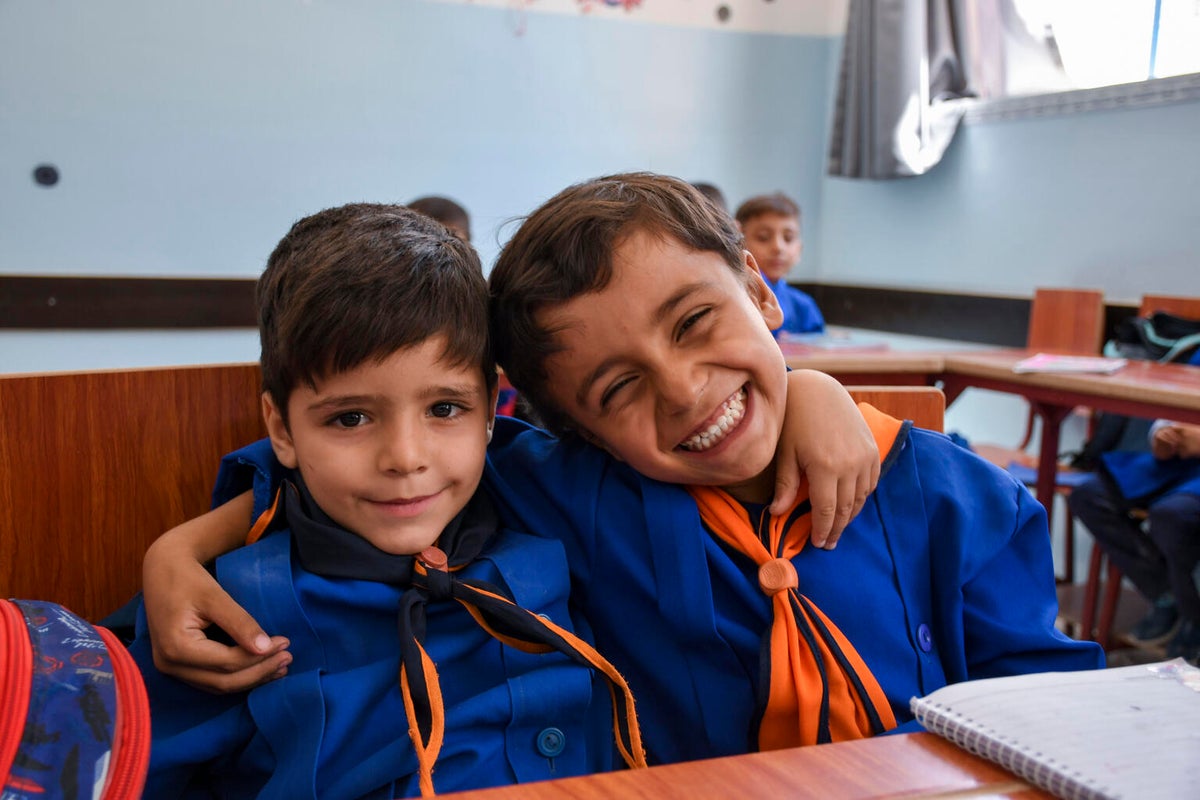
During an Arabic lesson in a newly rehabilitated school in rural Damascus, two seven-year-old friends, Karam and Mohamed, talk about what they are learning.
"Today, we are learning the letter B, and I am competing with Mohamed. His handwriting is more beautiful, and he is my best friend."
Their school was badly damaged due to the conflict and had to be closed in 2012. When people started returning to the area, the two other functional schools were overloaded with a huge number of students and limited teaching capacity and infrastructure.
In 2021, UNICEF supported the rehabilitation of the school, and in 2022 it opened its doors again.
Azzam, twelve
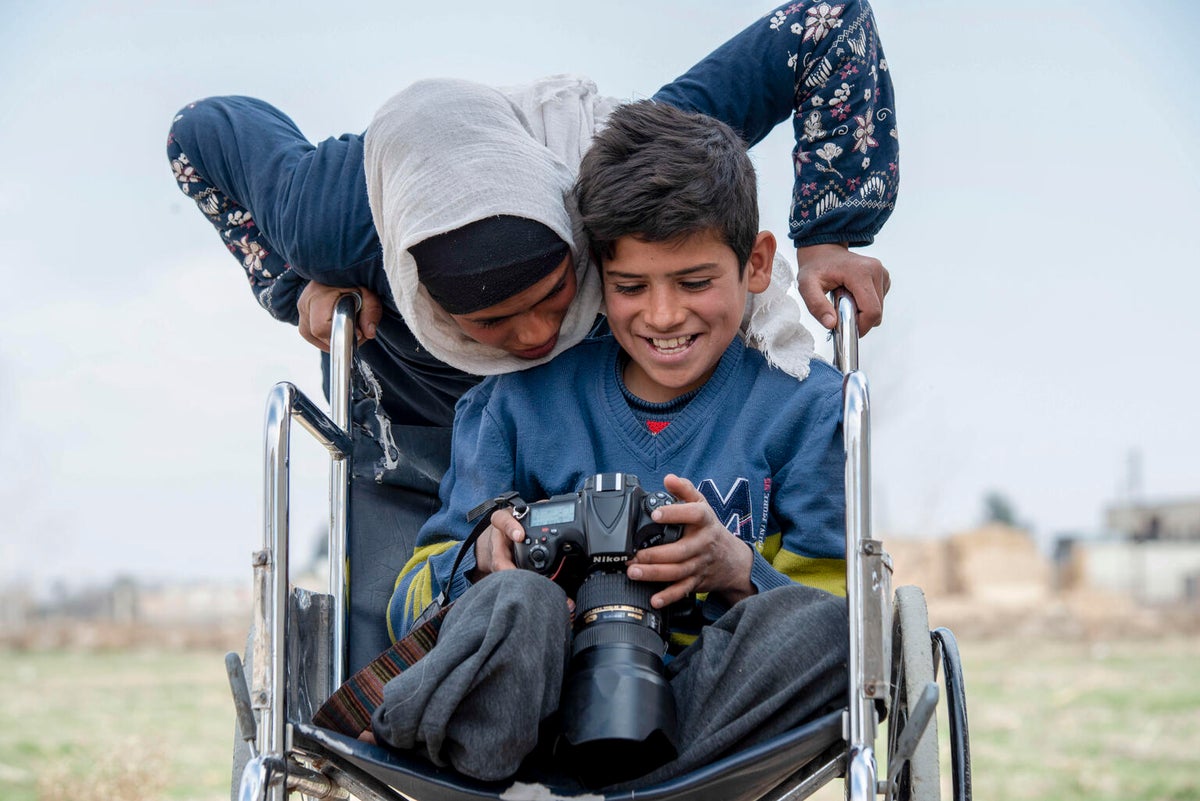
Twelve-year-old Azzam holds a camera for the first time in his life. He shows his sister, Sidra, the photographer’s images.
Azzam was five years old when a shell fell on the house where he was staying. His little sister was killed, his father was badly injured, and Azzam lost his leg. He had to undergo several surgeries and felt unsafe for a long time. He cried when he saw a drop of blood or heard a loud noise.
To help him and his siblings to regain a sense of normalcy, Azzam’s parents enrolled their children at school.
Azzam had difficulties walking to school every day. The handmade wooden sticks he used instead of actual crutches did not support him well. So, he dropped out. In 2019, things started looking up for Azzam. He visited a UNICEF -rehabilitated and equipped elementary school supporting inclusive education. Azzam and his sisters Sidra and Nour have not missed a day of school since.
Mariam, four
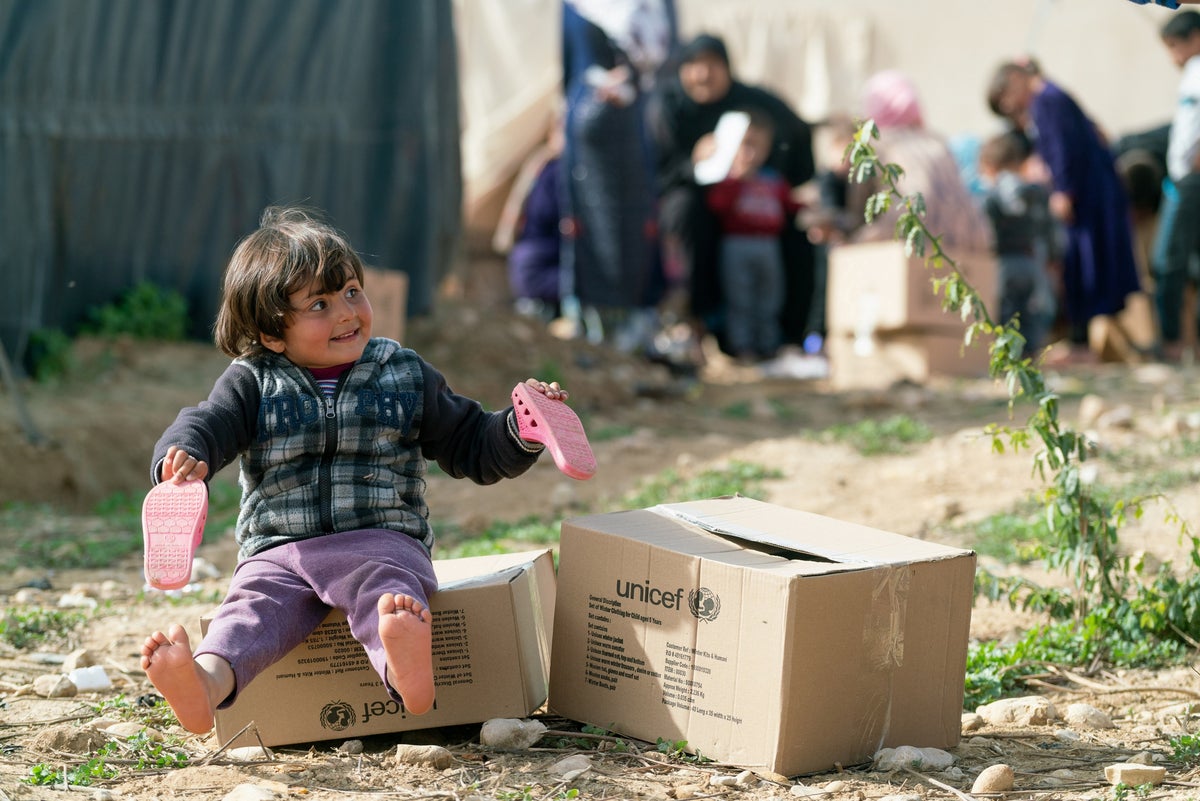
Syrian families have now faced multiple freezing winters, displaced from home and often with little but a flimsy tent to protect them against storms, snow and flooding.
Each year, UNICEF distributes warm winter clothing kits to Syrian refugee children to protect against the cold, while cash assistance provides a safety net for families who are struggling on a daily basis to survive.
Mariam lives in an informal tented settlement in Jordan and is happy with her new jumper, pants, hat and boots. “I like the new clothes. They’re warm,” says Mariam.
"This assistance is psychologically more important to us than the physical items themselves. The fact that people are thinking about us, that people care about us – it means everything."
Jumaa, twelve

Standing in the barn with his sheep in front of the family’s home in east rural Aleppo, 12-year-old Jumaa recalls the time he lost his foot.
"I was collecting truffles with my family when I stepped on the mine."
A UNICEF-supported mobile team visited Jumaa's village. They provided a safe space and educational and fun activities to help children and adolescents in the village develop skills to solve problems, cope with their emotions, and form and maintain relationships. With the desire to make more friends, Jumaa started taking part in the activities organised by the team three times a week.
Since 2021, UNICEF has reached over 1.1 million children and more than 200,000 caregivers with explosive ordnance risk education in Syria.
Sara, ten
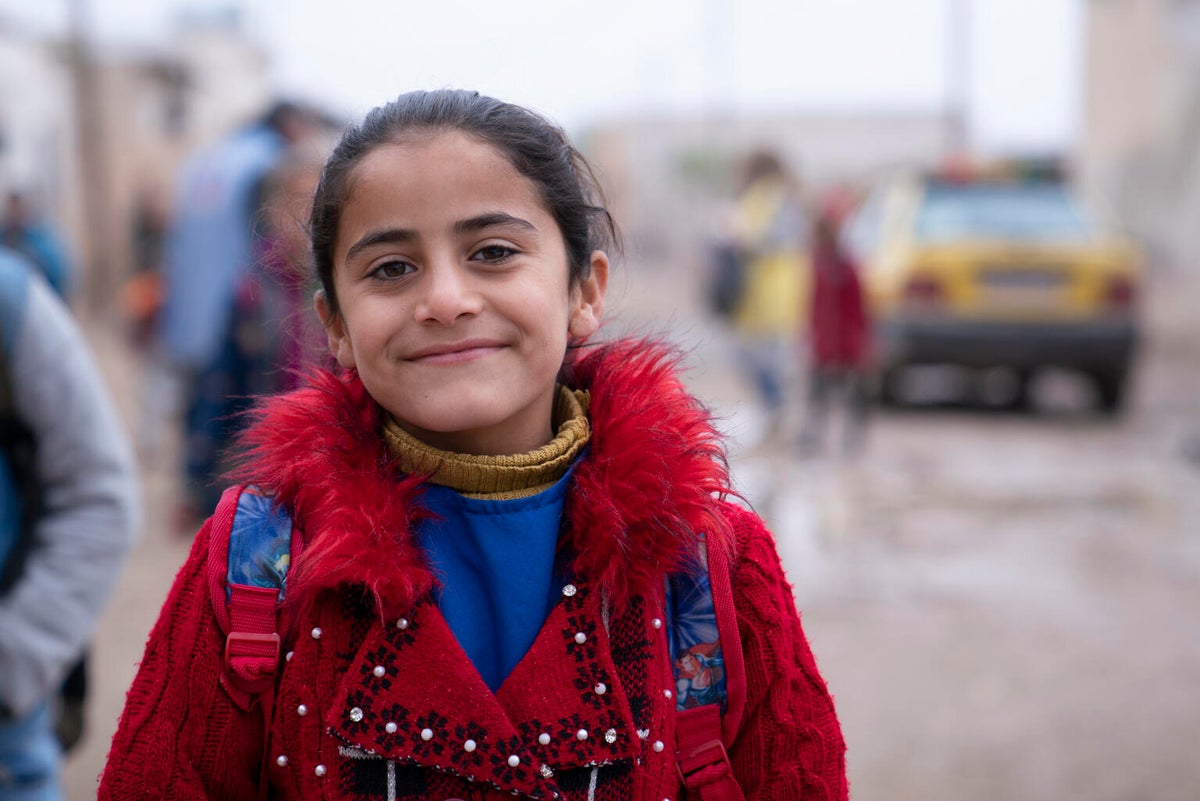
“I hate being sick, and I want to play all the time. I took the vaccine as soon as I heard about it, and the lady who gave it to me was very kind!” says ten-year-old Sara.
Sara was vaccinated against cholera by a UNICEF-supported Department of Health mobile team in south rural Aleppo.
Since the Ministry of Health declared the cholera outbreak on 10 September 2023, tens of thousands of suspected acute watery diarrhoea (AWD) cases have been reported, with Aleppo governorate in northwest Syria being among the most impacted areas.
UNICEF has supported the efforts of the Ministry of Health (MoH) to curb the spread of the disease by providing two million doses of vaccines and kick-starting a Sub National Oral Cholera Vaccination campaign supported by UNICEF and WHO.
Aref, twelve
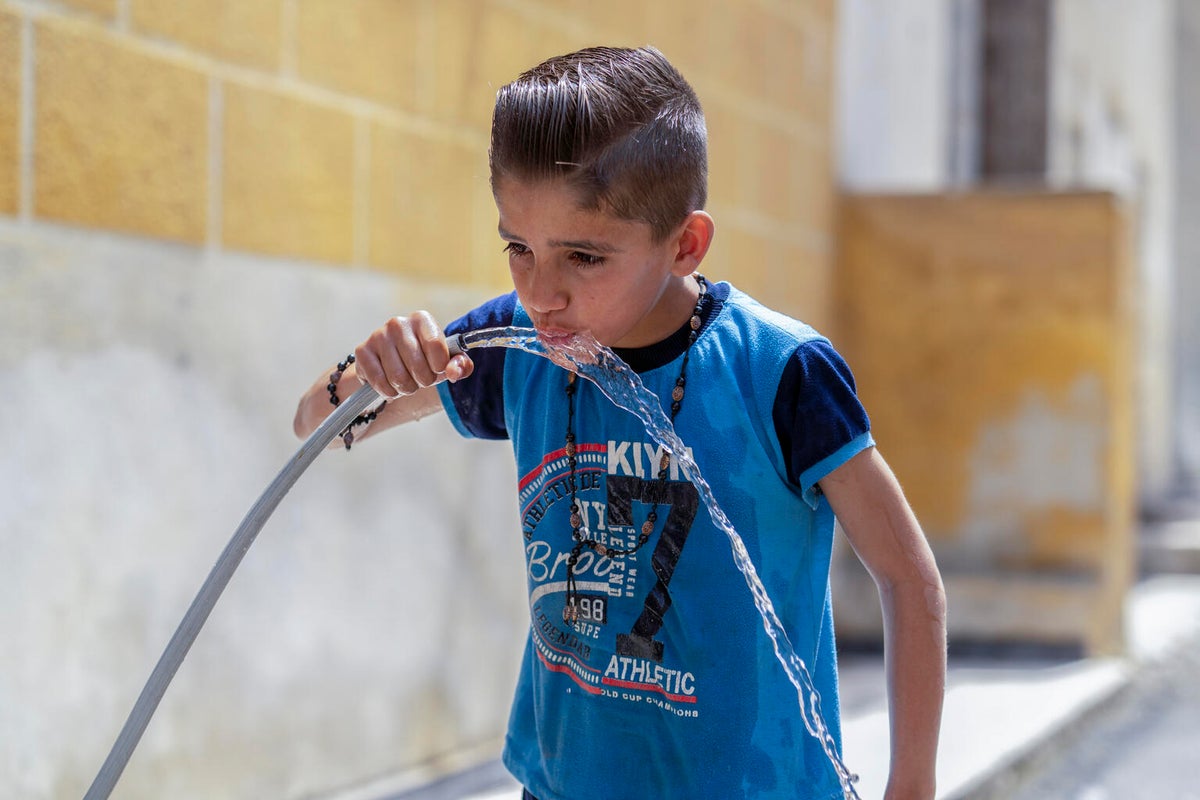
Twelve-year-old Aref drinks water in front of his home in Aleppo. In Syria, the conflict has damaged nearly two-thirds of water treatment plants, half of the pumping stations and one-third of water towers.
Nearly half of the people rely on alternative and often unsafe water sources to meet or complement their water needs, and at least 70 per cent of the discharged sewage is untreated.
In Aref's neighbourhood, drinking water used to leak from the main underground pipes, causing low pressure in the pipes. Water flowed only intermittently and often only after midnight. It also did not reach most of the houses.
As part of a UNICEF-funded WASH initiative, UNICEF rehabilitated the main water network in Aref’s neighbourhood. This improvement, together with the rehabilitation of the sedimentation tanks in a nearby water treatment plant, increased the amount of water pumped to the communities and made safe drinking water available for more families.
How you can support the children of Syria
Related articles
Stay up-to-date on UNICEF's work in Australia and around the world


